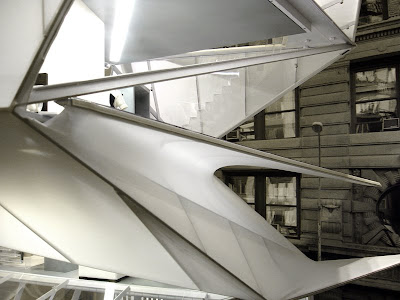




I was fascinated by Leanodro Erlich's Swimming Pool at PS1. Conceived almost 10 years ago, it still looks amazing to me. The main reason, I guess, is that I found it very architectural.
The ordinary and the extraordinary
It is a swimming pool. But it is more than a swimming pool. The "hidden" space underneath has turned a mundane household object into magic. The surreal unexpectedness shakes our understandings of reality. What we take for granted in our everyday life is challenged, defamiliarized, and given another layer of meanings. Oh, I almost forgot, the "reality" we see is mostly constructed anyways.
The object and the non-object
What are we seeing here? The beautifully crafted wood deck? The shiny stainless steel ladder? Or the elegant rounded corners?
None. The art is not the object itself - it is just a stage. It is a stage for a play of participation and interaction. The artist becomes the director. Surprise as an experience, is the result of physical and emotional involvements of the viewer.
The viewer and the viewed
When you think you are watching people on the other side of the thin layer of water, they are watching you as well. This is not a classic case of voyeurism. As a spatial result, what is in and what is out becomes a dialectical question.























